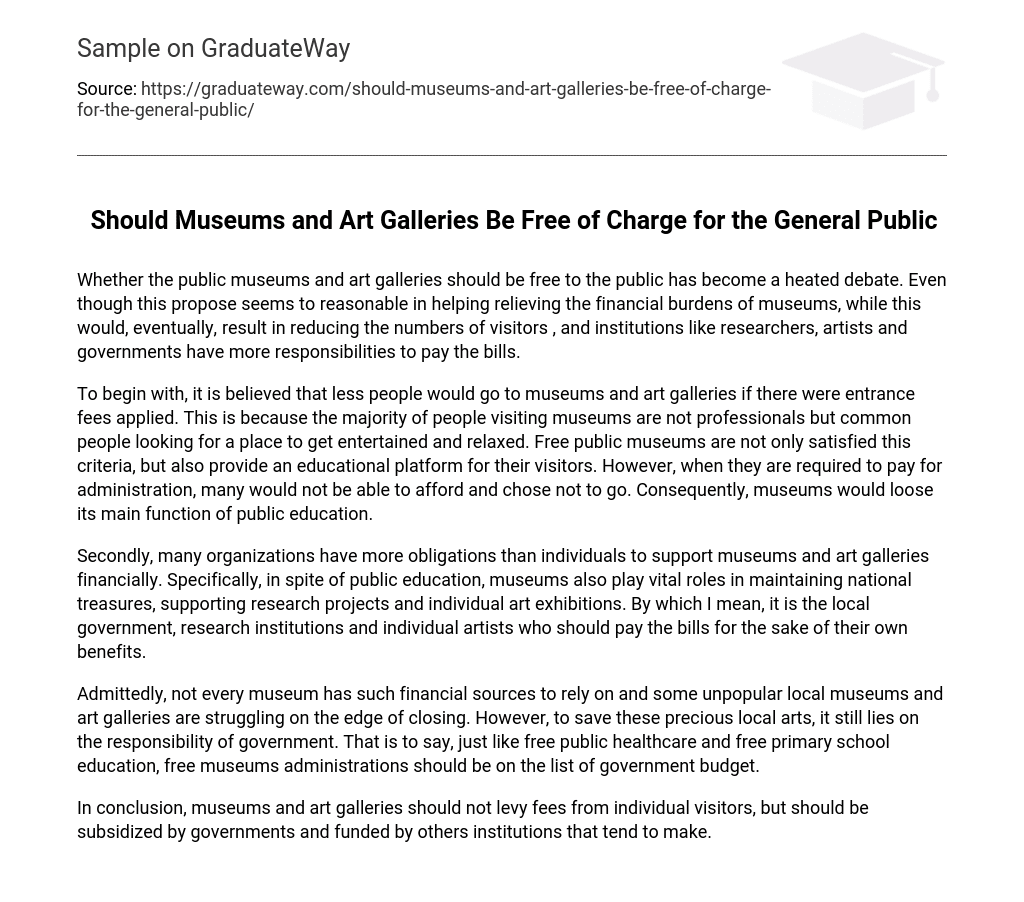Whether the public museums and art galleries should be free to the public has become a heated debate. Even though this propose seems to reasonable in helping relieving the financial burdens of museums, while this would, eventually, result in reducing the numbers of visitors , and institutions like researchers, artists and governments have more responsibilities to pay the bills.
To begin with, it is believed that less people would go to museums and art galleries if there were entrance fees applied. This is because the majority of people visiting museums are not professionals but common people looking for a place to get entertained and relaxed. Free public museums are not only satisfied this criteria, but also provide an educational platform for their visitors. However, when they are required to pay for administration, many would not be able to afford and chose not to go. Consequently, museums would loose its main function of public education.
Secondly, many organizations have more obligations than individuals to support museums and art galleries financially. Specifically, in spite of public education, museums also play vital roles in maintaining national treasures, supporting research projects and individual art exhibitions. By which I mean, it is the local government, research institutions and individual artists who should pay the bills for the sake of their own benefits.
Admittedly, not every museum has such financial sources to rely on and some unpopular local museums and art galleries are struggling on the edge of closing. However, to save these precious local arts, it still lies on the responsibility of government. That is to say, just like free public healthcare and free primary school education, free museums administrations should be on the list of government budget.
In conclusion, museums and art galleries should not levy fees from individual visitors, but should be subsidized by governments and funded by others institutions that tend to make.





